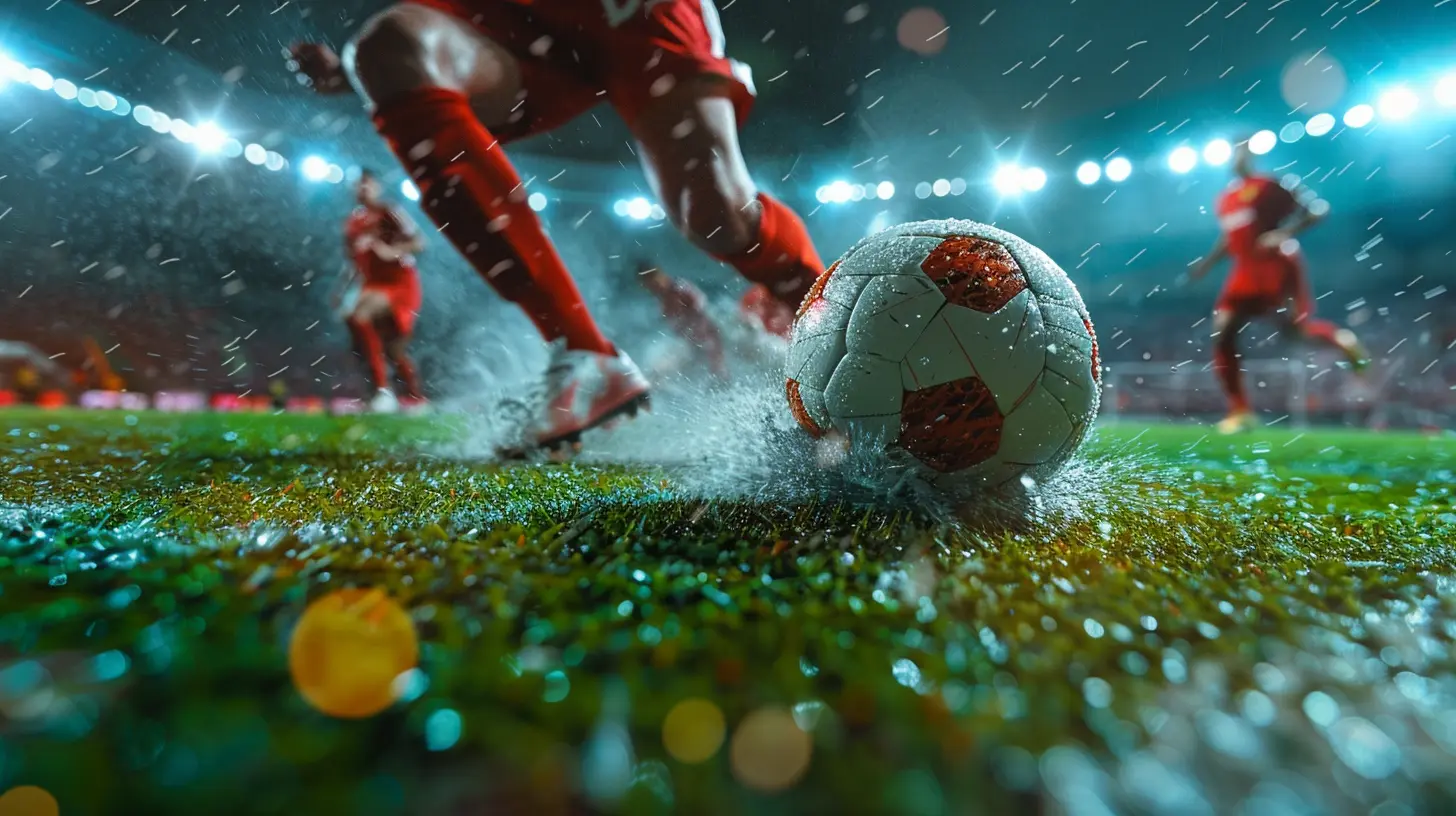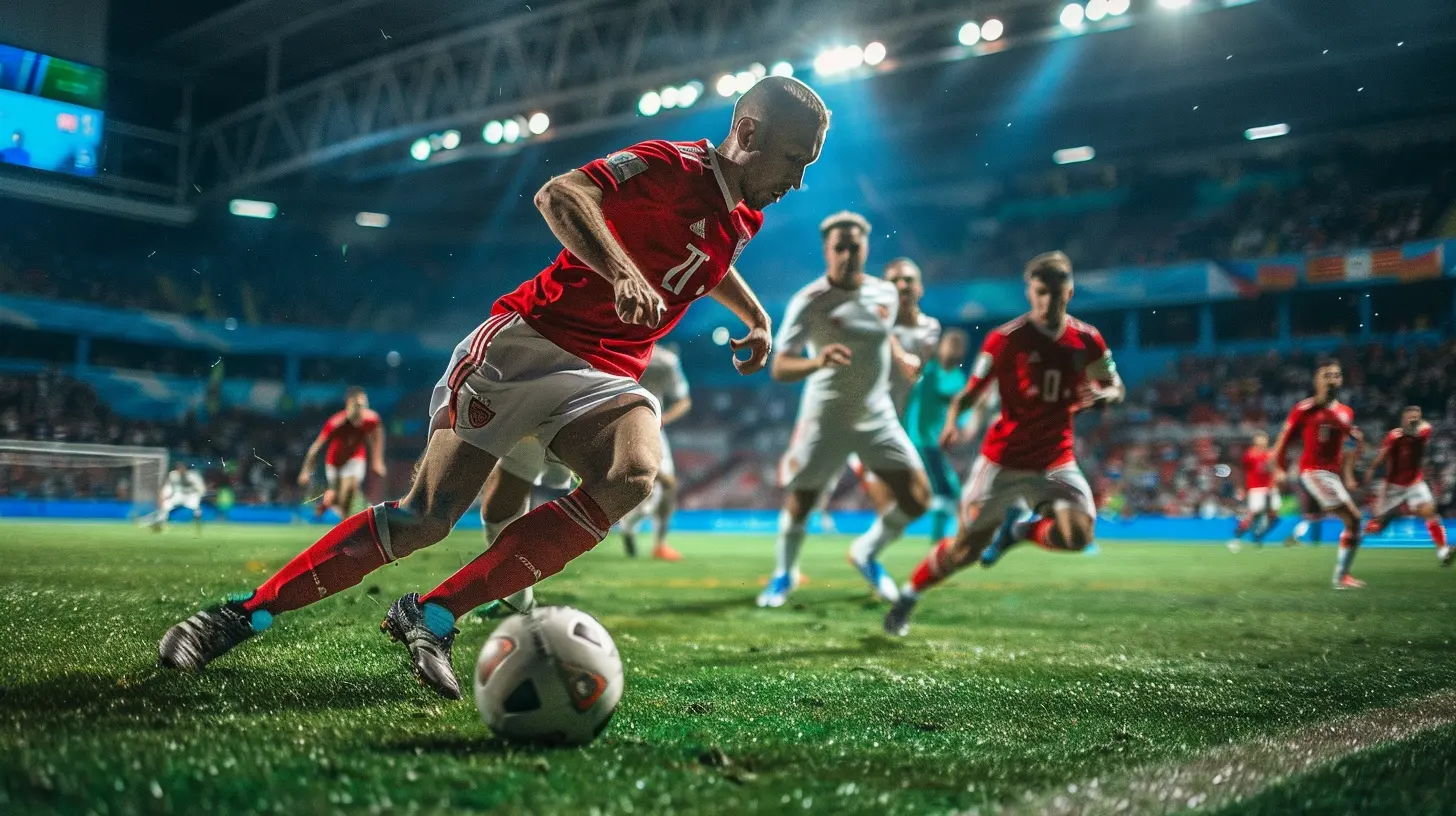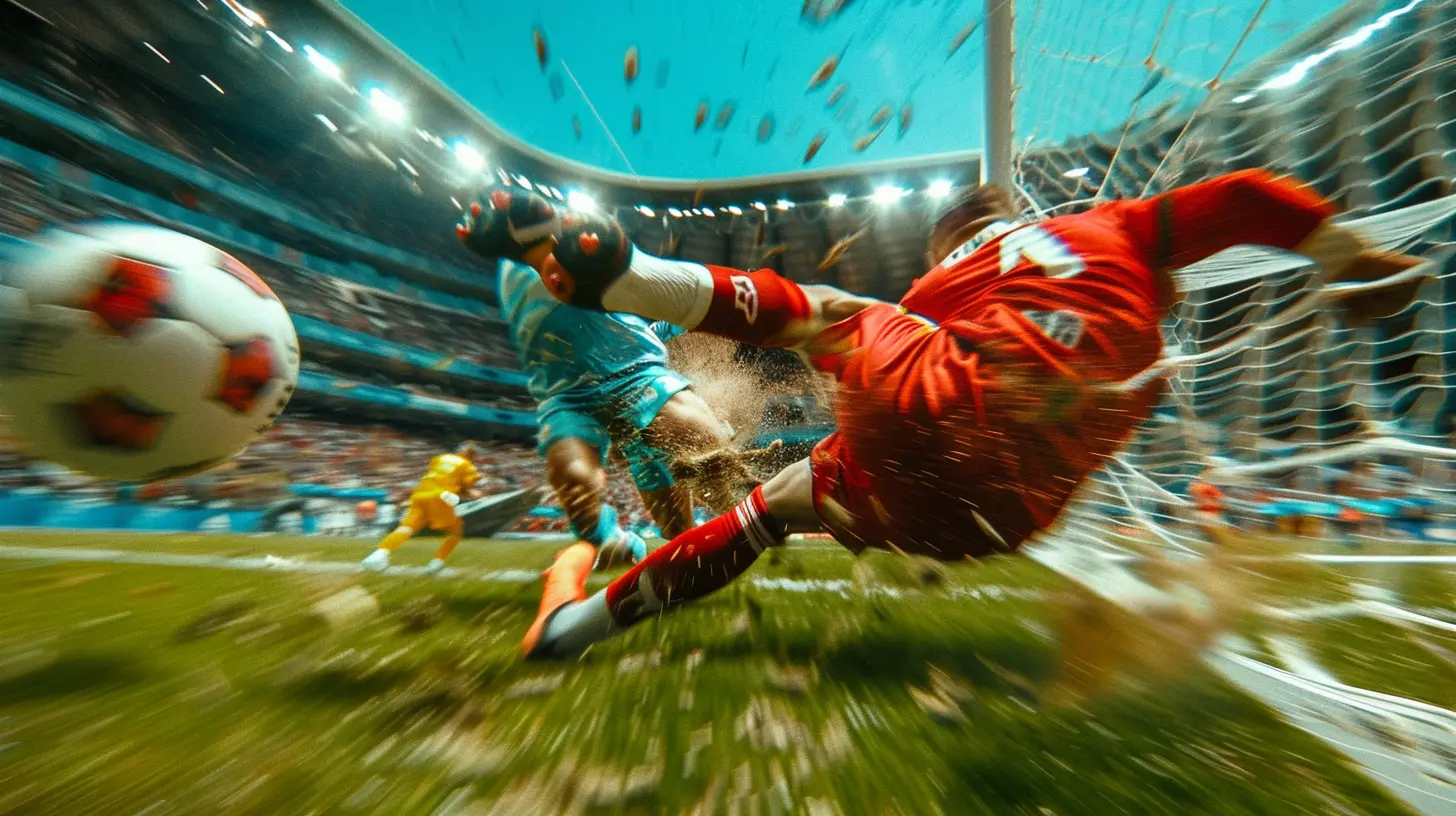Transition Play: How Counterattacks Decided the Outcome
30 April 2025
When we think of the most thrilling moments in football, one thing stands out—counterattacks. Those rapid, breathtaking transitions from defense to attack that leave opponents stunned and fans on their feet. Some of the biggest games in history have been decided by well-executed counterattacks. But what makes them so lethal? How do teams use transition play to dominate their opponents? Let’s dive deep into the art of counterattacks and how they shape match outcomes. 
What Is Transition Play in Football?
Before we get into the nitty-gritty of counterattacks, let’s break down transition play. Football matches constantly shift between attack and defense, but it’s in these quick transitions that teams can exploit their opponents the most.There are two types of transitions in football:
- Defensive Transition – When a team loses possession and immediately shifts into a defensive stance to prevent a counterattack.
- Offensive Transition – When a team wins possession and looks to launch a quick attack before the opposition can reorganize.
It’s the offensive transition, also known as the counterattack, that often leads to some of the most dramatic goals in football. 
Why Are Counterattacks So Effective?
Counterattacks work because they catch defenses off guard. When a team is attacking, their defenders often push higher up the pitch, leaving space behind them. If the attacking team loses the ball, suddenly they’re exposed—and that’s where counterattacking teams thrive.Here’s why counterattacks can be game-changers:
- Exploiting Open Spaces – Defenses aren’t set, making them vulnerable to quick attacks.
- Fewer Defenders to Beat – Since defenders are caught out of position, attackers have more room to maneuver.
- Pace and Precision – Speed and quick decision-making make counterattacks deadly.
Think about teams like Real Madrid under Zinedine Zidane or Leicester City’s fairytale Premier League triumph in 2015-16. Their ability to transition from defense to attack in seconds made them incredibly hard to stop. 
The Key Elements of a Deadly Counterattack
Not every team can master the art of counterattacking. It takes speed, awareness, and tactical discipline. Here are the crucial ingredients for a lethal counterattack:1. Quick Ball Recovery
A strong counterattack starts with winning the ball back efficiently. This could be through an interception, a tackle, or forcing a mistake. The quicker you regain possession, the harder it is for opponents to react.2. Speed in Transition
The best counterattacks happen within seconds. Players must move the ball forward rapidly—whether through sharp passing or direct dribbling. Slowing down gives the opposition time to recover, killing the element of surprise.3. Vertical Play
Counterattacking teams prefer vertical play—moving the ball forward quickly rather than passing sideways or backward. Midfielders and forwards need to make forward runs to stretch the opposition.4. Decision-Making
Counterattacks demand quick decision-making. Should you pass or shoot? Play it wide or go through the middle? A moment’s hesitation can allow defenders to get back into position.5. Finishing with Precision
All that effort in launching a quick break is wasted if attackers aren’t clinical in front of goal. The best counterattacking teams ensure their final pass and shot are on point.
Iconic Moments Where Counterattacks Decided the Outcome
Nothing beats the excitement of a goal that comes out of nowhere. Here are some legendary counterattacking moments that changed football history:1. Real Madrid vs. Bayern Munich (2017 UCL Quarter-Finals)
Cristiano Ronaldo’s hat-trick in the second leg was a masterclass in counterattacking football. Madrid absorbed Bayern’s pressure and then struck with lightning-fast breaks, taking full advantage of their opponent’s high defensive line.2. Leicester City’s Title-Winning Season (2015-16)
Leicester’s blueprint for success? Defend deep, recover the ball, and launch deadly counterattacks through Jamie Vardy and Riyad Mahrez. Their ability to turn defense into attack instantaneously made them unstoppable.3. Brazil vs. Germany (2002 World Cup Final)
Brazil’s second goal in the final, orchestrated by Rivaldo and finished by Ronaldo, was a textbook counterattack. Germany got caught pushing forward, allowing Brazil to slice through them in a few swift passes.How Teams Set Up for Counterattacking Football
Some teams are naturally built for counterattacks, while others struggle with it. The way a team sets up tactically can determine how well they execute fast transitions.1. Defensive Shape
Counterattacking teams typically play with a compact defensive setup. Instead of pressing high, they sit deeper, inviting pressure before pouncing on loose balls.2. Fast Wingers and Forwards
Speed is everything in counterattacks. Teams rely on rapid forwards who can break past defenders in a flash. Players like Kylian Mbappé and Mohamed Salah thrive in these situations.3. Midfielders with Vision
A counterattack is only as good as the players orchestrating it. Midfielders like Kevin De Bruyne and Luka Modrić excel at picking out perfect forward passes in transition.4. Overlapping Full-Backs
In modern football, full-backs play a crucial role. They provide width and offer an extra attacking option when breaking forward.The Tactical Battle: Counterattack vs. Possession Play
Counterattacking football is thrilling, but it often clashes with another dominant style—possession-based football. So, which one is better?- Possession Play – Teams like Barcelona (under Pep Guardiola) focus on controlling the game with short passes, limiting counterattacking opportunities for their opponents.
- Counterattacking Play – Teams like Atlético Madrid under Diego Simeone prioritize staying compact and hitting teams on the break.
Both styles have their strengths, and the best teams know how to blend both approaches to keep opponents guessing.
Can Any Team Master Counterattacks?
Absolutely! While counterattacks often favor teams with fast players, the real secret lies in tactics and awareness. Even teams without lightning-quick forwards can use well-timed passes and smart positioning to execute effective transitions.Coaches like José Mourinho have proven that discipline and strategy matter just as much as speed. Under his management, teams like Inter Milan and Chelsea executed counterattacks flawlessly, even against possession-heavy opponents.
Conclusion
Counterattacks aren’t just an exciting part of football—they’re match-defining moments that separate good teams from great ones. From Leicester City’s Premier League triumph to Real Madrid’s Champions League dominance, transition play has shaped football’s biggest victories.Whether you're a coach, player, or just a passionate fan, understanding the power of counterattacks adds another layer to appreciating the beautiful game. So next time you watch a match, keep an eye out for that lightning-fast break—it might just decide the outcome!
all images in this post were generated using AI tools
Category:
Game AnalysisAuthor:

Frankie Bailey
Discussion
rate this article
7 comments
Fenn Dorsey
Great insights on the impact of counterattacks! It’s fascinating how swift transitions can change the game’s momentum. Thanks for highlighting this crucial aspect of sports strategy!
May 18, 2025 at 7:56 PM

Frankie Bailey
Thank you! I’m glad you found the analysis on counterattacks and their impact on momentum insightful. It's a key element in sports strategy!
Josie Harmon
Ah, the art of counterattacking! It’s like a surprise party where the defense thought they were safe, and suddenly—BAM! Cake in the face! Who knew that turning defense into attack could be so deliciously entertaining? Just remember, folks: the best defense is a good offense… and maybe a slice of pizza!
May 14, 2025 at 4:28 AM

Frankie Bailey
Glad you enjoyed the analogy! Counterattacking truly adds an exciting twist to the game, just like unexpected cake—or pizza—at a party! 🍕
Cora Ross
Great insights on counterattacks! They truly highlight the importance of quick transitions in sports.
May 11, 2025 at 2:41 AM

Frankie Bailey
Thank you! I'm glad you found the insights valuable. Quick transitions are indeed crucial for success in sports!
Michelle McWhorter
Great insights! Transition play really showcases the thrill of quick thinking and adaptability in sports. It’s fascinating how counterattacks can shift the momentum so dramatically, truly emphasizing the importance of speed and strategy in the game. Keep up the excellent analysis!
May 9, 2025 at 1:07 PM

Frankie Bailey
Thank you for your thoughtful comment! I’m glad you found the insights on transition play and counterattacks engaging. Speed and strategy are indeed crucial in shaping the game's outcome!
Zeal McCracken
Counterattacks make or break games!
May 6, 2025 at 10:44 AM

Frankie Bailey
Absolutely! Counterattacks can shift momentum and change the game's outcome in an instant.
Maris McTigue
Counterattacks epitomize the beauty of sports—swift, strategic, and electrifying! Mastering transition play not only defines the game's outcome but also ignites a relentless passion in players and fans alike. Embrace the thrill of the unexpected!
May 5, 2025 at 4:05 AM

Frankie Bailey
Thank you! Counterattacks truly capture the essence of sports excitement and the dynamic nature of transition play. Your enthusiasm is contagious!
McCord
Counterattacks showcased strategic brilliance, turning the game’s momentum decisively.
May 3, 2025 at 4:48 AM

Frankie Bailey
Thank you! Counterattacks truly highlight the importance of quick transitions in altering momentum and securing victory.
MORE POSTS

What to Pack for a Multi-Day Ski Trip

Books That Capture the Grit and Glory of Sports History

How Circadian Rhythms Affect Athletic Performance: A Scientific Exploration

The Last Shot: A Legendary Athletes Goodbye

How to Optimize Your Pre-Workout Routine for Maximum Energy

The Hidden Role of the Bench: Why Depth Matters in Baseball